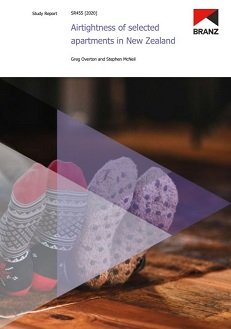
SR455 Airtightness of selected apartments in New Zealand (2020)
Product Description
This study sought to measure the airtightness of a number of apartment buildings with the aim of getting some indicative sense of the level of airtightness being provided by the wider stock of apartments in New Zealand. The airtightness of a building is a key aspect of a building’s performance – affecting the energy efficiency, thermal comfort and indoor air quality provided by the building.
In general, the apartments were of a similar level of airtightness to what could be expected from a typical new-build stand-alone dwelling – approximately 5 ach @ 50 Pa. However, the results suggest a strong dependence on construction style. For example, for an apartment building comprising a number of concrete cells, the average result was 3.5 ach @ 50 Pa. Inter-apartment leakage appeared to be insignificant in this style of apartment but did occur in some instances, most clearly when timber partition walls were used to separate dual-key apartments.
The report also contains a general discussion around possible airtightness targets and the rationale for their potential inclusion in the Building Code. This culminates in BRANZ recommending that an airtightness level of under 3 ach @ 50 Pa becomes a target for all residential typologies in conjunction with whole-house mechanical ventilation as standard. Mandatory blower-door testing is not recommended initially, but it is signalled as being desirable in the medium-term future.
See the BRANZ Research Now for a short and accessible summary of this report
Product Information
| Publication date | October 2020 |
|---|---|
| Author | Greg Overton, Stephen McNeil |
| System number | SR455 |